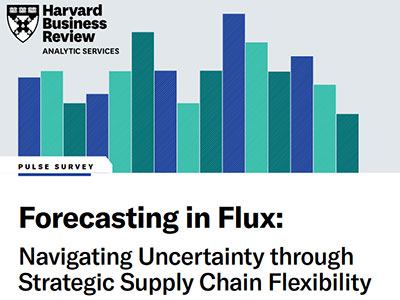Lisa Anderson was quoted in a Harvard Business Review report about supply chain volatility and uncertainty that are part of the new normal.
###
Since early 2020, supply chain disruptions have captured global attention like never before. Newspaper headlines reported dramatic events ranging from surging toilet paper demand to empty store shelves to a ship blocking the Suez Canal. These events only worsened the existing global supply chain crisis. Much of the disruption was pandemic-related, but it hasn’t waned nearly as much as Covid-19 has. Many organizations find that supply chain volatility and uncertainty are part of the new normal.
Consequently, companies find it difficult to accurately predict demand. In February 2023, Harvard Business Review Analytic Services conducted a global survey of 459 respondents familiar with their organizations’ supply chain operations. The survey found that of those whose organizations execute demand forecasts, 69% say, on average, the accuracy of their demand forecasts has been below 80% over the past three years. And respondents are not particularly pleased by this result; only 8% indicate that they are “very satisfied” with the average level of accuracy of their organization’s demand forecasts.
Indeed, forecasts are inherently wrong. The questions often are just how wrong a forecast will be and when that failure will occur.
Extreme Events Changed the Game
It is difficult for organizations to predict demand and plan operations if they can’t be certain about what lies ahead. Lisa Anderson, founder of Claremont, Calif.-based LMA Consulting, says the military term “VUCA”—volatile, uncertain, complex, and ambiguous—best describes global supply chains at present.
“Since the pandemic, new issues have arisen—the Russia-Ukraine war, for example—that are causing issues in many supply chains,” she says. “Oil and natural gas are used in the production of multiple products, and this affects everything from medical devices to fertilizer and food production. When you add the heightened tensions between the U.S. and China, and extreme weather events, the picture is one of continued disruption. We have to stop waiting for it to end. It’s not going to end.”
To read the full report, click here.
Originally published on Harvard Business Review, June 15, 2023



